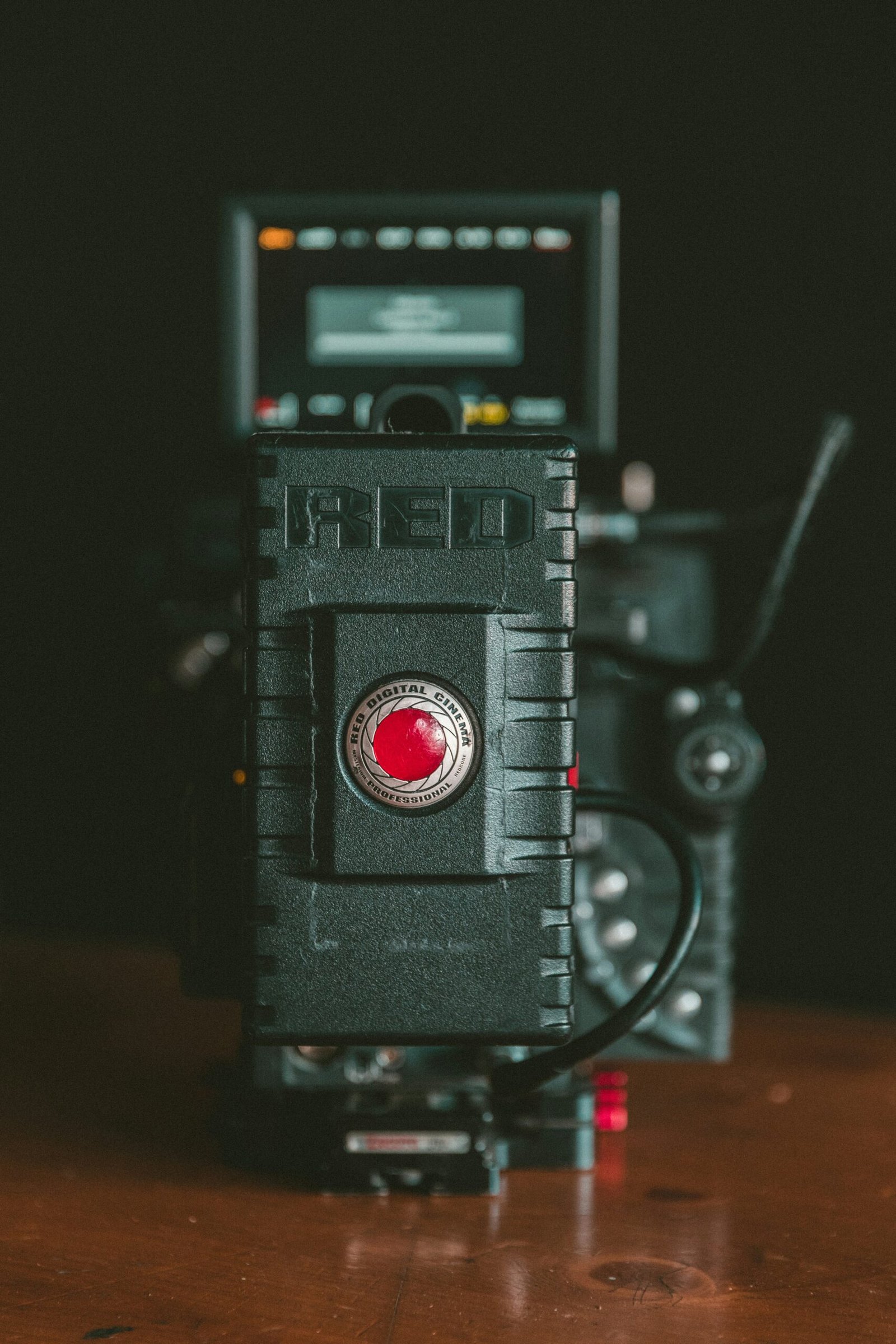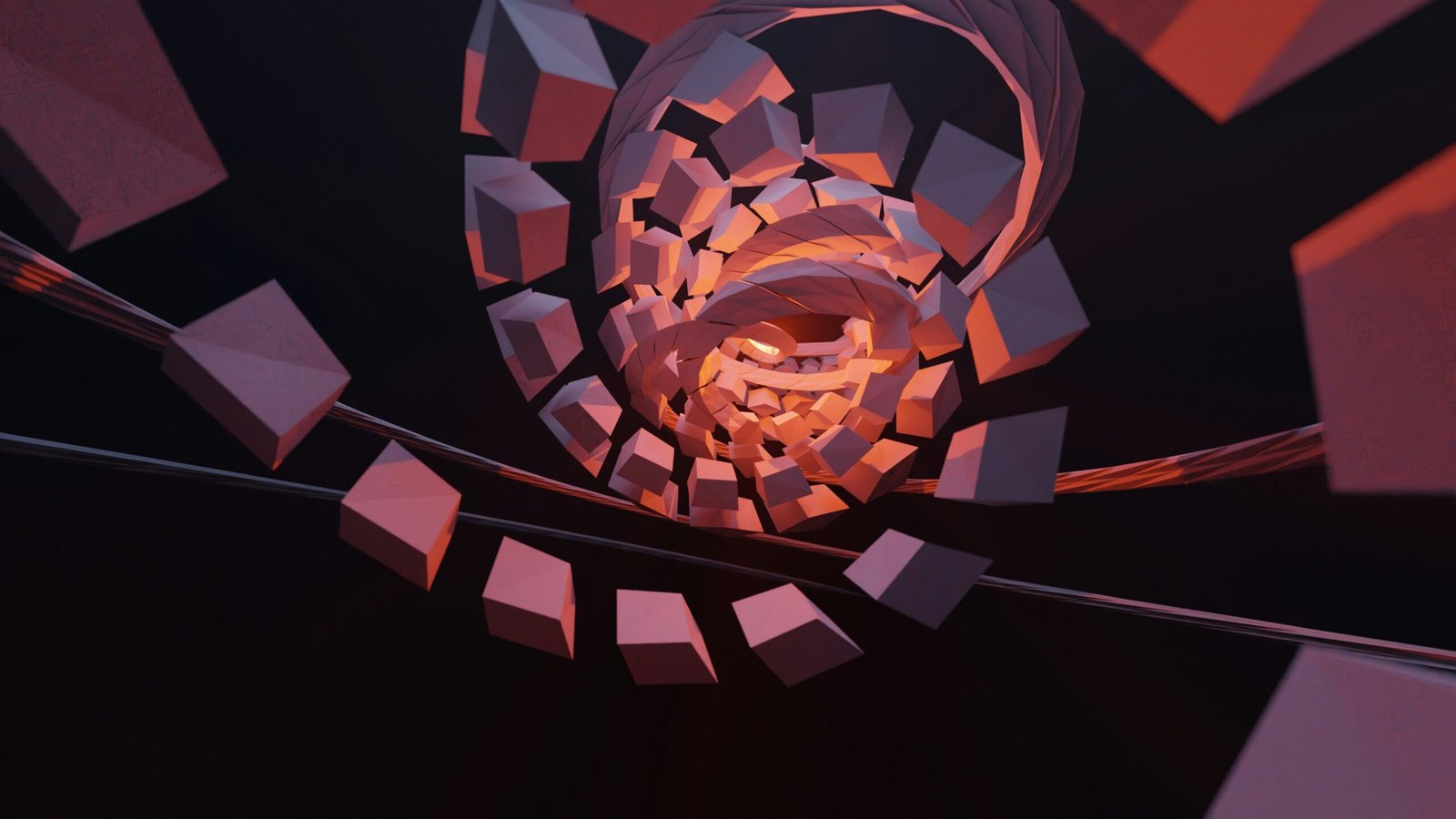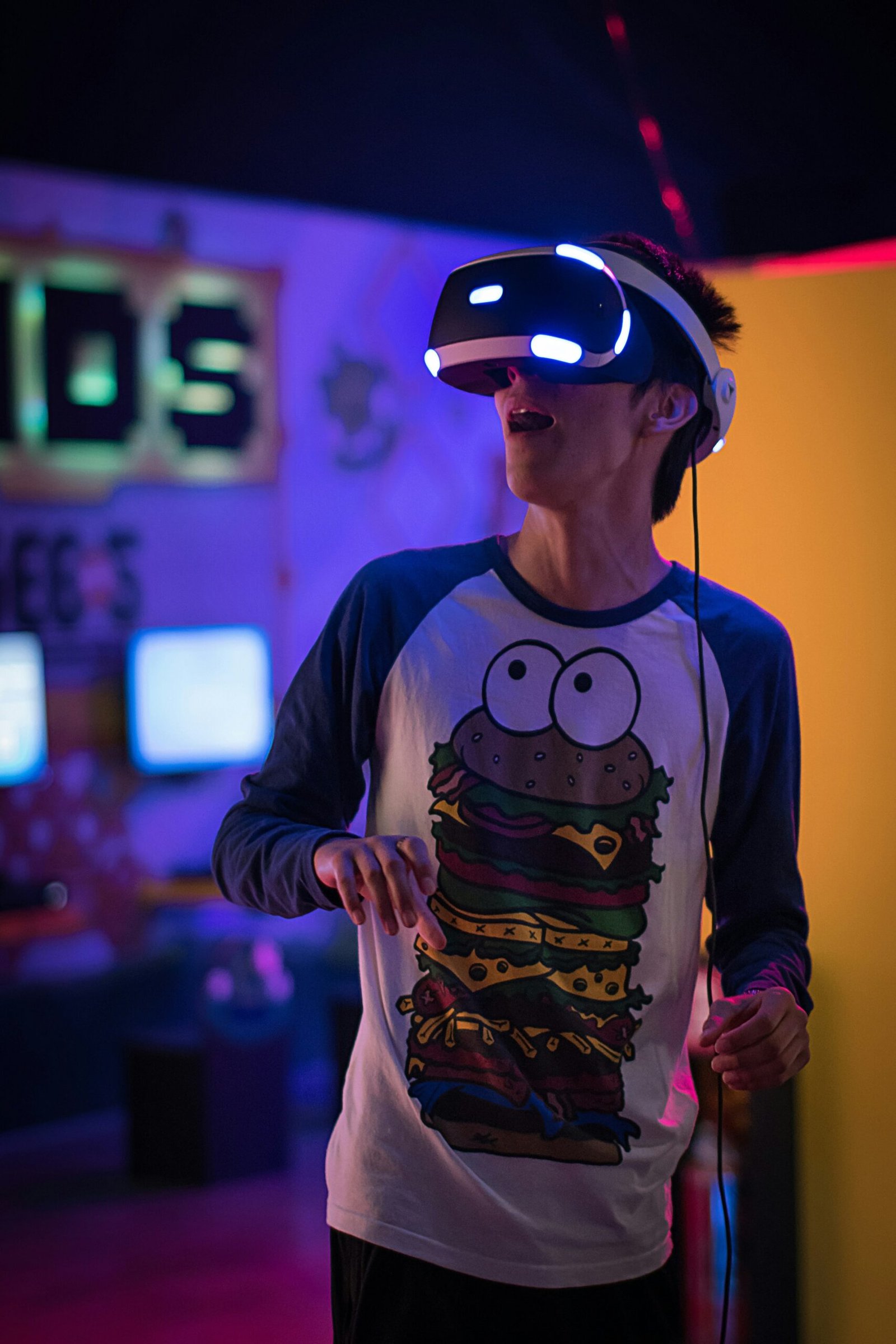Introduction to Extended Reality
Extended Reality (XR) is an encompassing term that integrates various immersive technologies, such as virtual reality (VR), augmented reality (AR), and mixed reality (MR). By creating interactive environments that merge physical and digital worlds, XR offers profound possibilities for transforming how individuals experience, interact with, and comprehend their reality. With the rapid advancement of technology, XR has gained significant traction across multiple sectors, including education, healthcare, entertainment, and business, raising essential questions about its broader implications.
This innovative approach to reality is not merely a trend; it represents a paradigm shift in human experience. XR enables users to engage with digital elements or information in a spatial context, thereby enriching their understanding of complex subjects or enhancing creative processes. For example, in medical training, XR can simulate surgical procedures, providing a safe and interactive environment for learners to practice. The potential applications are vast and varied, prompting discussions about how these technologies might reshape education and professional practices.
Yet, the rise of XR invites intriguing philosophical inquiries. How do these technologies influence our perception of reality? Do they alter the boundaries between the physical and virtual realms? As XR continues to develop, it challenges traditional notions of existence and reality, inviting debate among scholars and technologists alike. The ethical dimensions of extending reality also warrant examination; for instance, how should we regulate the use of XR in ways that honor individual privacy and mental well-being?
Ultimately, as we delve deeper into the themes of science and philosophy surrounding extended reality, we invite readers to contemplate the evolving relationship between humanity and technology. This exploration seeks to provide a comprehensive understanding of XR, laying a foundation for further discussions on its profound implications in our contemporary world.
The Essence of Extended Reality
Extended Reality (XR) is an overarching term that encompasses various immersive technologies designed to blend physical and digital worlds. This innovative domain covers three primary components: virtual reality (VR), augmented reality (AR), and mixed reality (MR). Each of these elements provides unique experiences that significantly alter human interaction with digital content.
Virtual reality (VR) immerses users in a wholly synthetic environment, disconnecting them from the physical world. Utilized primarily in gaming, training simulations, and therapeutic contexts, VR involves the use of headsets and sensory equipment to create an engaging experience. Users navigate a three-dimensional space that responds to their movements, enhancing feelings of presence and immersion.
On the other hand, augmented reality (AR) overlays digital information onto the real world. This technology enriches the user’s perception of reality by integrating computer-generated images, sounds, and other data through devices like smartphones or AR glasses. Noteworthy applications of AR include mobile games, educational tools, and interactive marketing campaigns. The capability of AR to streamline information access makes it especially relevant in today’s technology-driven society.
Mixed reality (MR) sits at the intersection of VR and AR, merging real and virtual elements to create interactive environments where physical and digital objects coexist. This allows users not only to view 3D projections superimposed on real-world objects but also to interact with them. MR applications are progressively emerging in fields such as architecture, design, and healthcare, enabling professionals to visualize and manipulate complex scenarios with greater ease.
Understanding the fundamental aspects of extended reality provides valuable insight into how these technologies can shape interpersonal communication, entertainment, and learning in contemporary society. The diverse functionalities of VR, AR, and MR exhibit their collective potential to redefine experiences, thus paving the way for innovative applications in various domains.
The Intersection of XR with Science
Extended Reality (XR), encompassing virtual reality (VR), augmented reality (AR), and mixed reality (MR), has emerged as a transformative force within the scientific community. By providing immersive experiences, XR technologies facilitate enhanced learning and research methodologies across various disciplines. From biology to astronomy, the applications of XR are rapidly expanding, enabling scientists and students alike to engage with complex concepts in a more tangible manner.
One notable example is the use of AR in medical education and training. Medical students can now visualize 3D anatomical structures superimposed onto their physical surroundings, allowing for a more comprehensive understanding of human physiology. This innovative approach not only enhances retention but also improves the accuracy of surgical procedures by enabling practitioners to rehearse operations in a virtually simulated environment. Such applications underscore how XR effectively bridges the gap between theoretical knowledge and practical skills, thereby enhancing educational outcomes.
In environmental science, researchers employ VR to simulate climate change scenarios, providing stakeholders with an immersive experience of future Earth conditions. By experiencing firsthand the potential impacts of temperature rise or deforestation, participants can better appreciate the urgency of scientific research and policy-making. XR’s capacity to create emotional connections and foster empathy is invaluable in advocating for environmental conservation, ultimately driving home the importance of scientific findings in a compelling manner.
Additionally, XR technologies are revolutionizing how scientists conduct research. For instance, astrophysicists use VR to visualize and manipulate vast datasets from astronomical observations, uncovering patterns and phenomena that may not be easily discernible through traditional methods. This integration of XR into scientific practice not only accelerates discovery but also democratizes access to data, enabling collaboration on a global scale.
Thus, the intersection of XR with science exemplifies a paradigm shift in how knowledge is acquired and disseminated, highlighting the immense potential for these technologies to enhance understanding and exploration in numerous scientific fields.
Philosophical Implications of Extended Reality
The advent of Extended Reality (XR) raises significant philosophical inquiries that challenge traditional notions of perception, reality, and existence. At its core, XR blurs the lines between the real and the virtual, which compels us to reconsider how we define what is ‘real’. This transformation in perception invites philosophical debates centered on the nature of reality itself, viewed through the lens of immersive technologies such as virtual reality (VR) and augmented reality (AR).
One major philosophical question is: What constitutes reality in the context of XR? Conventional ontology, which explores the nature of being and existence, faces challenges as these technologies create environments indistinguishable from physical experience. This leads to an exploration of whether experiences in XR can be considered ‘real’ in any meaningful way. If an individual experiences genuine emotions or interactions within an XR environment, does that not lend a degree of legitimacy to that experience? This dilemma suggests a need to reevaluate our criteria for validating experiences and existence.
Moreover, XR technologies have profound implications for our understanding of consciousness. As users engage with digitally created environments, the interaction between their physical presence and virtual experience raises questions about the nature of awareness and selfhood. Are we merely the sum of our experiences, enhanced or simulated through XR? Or, is there an intrinsic value to physical interaction that cannot be replicated in virtual spaces? This inquiry into consciousness and human experience reflects broader philosophical discussions about identity and existence.
In conclusion, the philosophical implications of Extended Reality compel us to explore complex questions surrounding perception, reality, and existence, urging a reevaluation of how we understand consciousness in a rapidly evolving digital landscape. By examining these concerns, we gain insight into how XR may redefine what it means to be human in an increasingly digitized world.
Prominent Theories in Science and Philosophy Related to XR
Extended Reality (XR), encompassing virtual reality (VR), augmented reality (AR), and mixed reality (MR), is underpinned by various theories from both science and philosophy. These theories provide a deeper understanding of the technological advancements and the implications these advances have on human perception and experience.
One prominent scientific theory relevant to XR is the concept of immersion, which refers to the sensation of being enveloped in a virtual environment. The psychological principles underlying immersion can be traced back to the works of Edward L. Thorndike, who explored associative learning and experience. His theories help us comprehend how XR environments can produce profound emotional and cognitive responses as users engage with simulated realities.
Another important figure in the realm of philosophy is Maurice Merleau-Ponty, whose ideas on embodiment and perception revolutionized our understanding of human experience. Merleau-Ponty’s philosophy suggests that our interactions with the world are not merely passively observed, but dynamically shaped by our sensory experiences. This notion directly connects with XR technology, as it facilitates new avenues for experiential learning through interactive environments that challenge our existing sensory modalities.
The theory of Simulacra by Jean Baudrillard also offers compelling insights into XR’s implications for reality and representation. Baudrillard argued that simulacra and simulations can replace authentic experiences, raising questions about the nature of truth and reality in a world increasingly dominated by digital replicas. This philosophical discourse urges us to consider how XR experiences might alter our perceptions, beliefs, and interactions with the real world.
Finally, in cognitive science, the theory of presence emphasizes the psychological state of feeling “in” a virtual space. This body of work has significant implications for designing XR experiences that are not only engaging but also impactful in various applications, from entertainment to education and therapy. By examining these diverse theories, we gain valuable insights into the potential of XR and its capacity to transform our understanding of human experience.
Real-World Examples of XR Applications
Extended Reality (XR) encompasses a spectrum of immersive technologies that combine elements of virtual reality (VR), augmented reality (AR), and mixed reality (MR). These technologies have found applications across various sectors, demonstrating their versatility and transformative potential. In the realm of entertainment, companies like Oculus and HTC Vive have revolutionized gaming experiences, allowing players to engage in fully immersive environments. Popular titles such as “Beat Saber” and “Half-Life: Alyx” exemplify how VR can enhance user engagement, creating experiences that were previously unimaginable.
In education, XR is being utilized to enrich the learning experience and make complex concepts more digestible. Institutions like Stanford University employ augmented reality to bring historical events to life, providing students with an interactive timeline of the past. Additionally, medical schools leverage virtual reality for surgical training, allowing students to practice procedures in a risk-free environment. This innovative approach helps to develop practical skills under supervised conditions, thereby improving the quality of healthcare professionals.
The healthcare sector also reaps the benefits of XR technologies. For instance, hospitals across the globe are integrating virtual reality into patient care, helping to alleviate anxiety and pain during medical treatments. The use of AR for visualizing anatomical structures enhances the capabilities of surgeons during operations. Furthermore, mental health professionals are increasingly using VR exposure therapy to treat conditions such as PTSD and phobias, demonstrating XR’s potential in psychological therapy.
In the world of art, artists are experimenting with augmented and virtual realities to create interactive installations. Events like the Venice Biennale have showcased XR projects that challenge traditional modes of artistic expression, allowing audiences to immerse themselves in the creative process. Through these diverse applications, extended reality technology continues to bridge gaps between imagination and reality, providing profound insights into our world.
The Future of Extended Reality
The future of Extended Reality (XR) holds remarkable potential, signaling significant transformations in how we interact with digital environments and each other. As technological advancements continue to emerge, XR technology is expected to evolve in ways that enhance user experience and accessibility. Innovations in hardware and software, such as faster processors, improved graphics, and more immersive interfaces, are likely to enrich the XR landscape, allowing for realistic simulations across diverse applications, from education and entertainment to healthcare and remote collaboration.
Moreover, as societal needs shift, the role of XR will become increasingly prominent. With more an increasingly interconnected world, the demand for effective communication and collaboration tools has never been higher. XR technologies such as Virtual Reality (VR) and Augmented Reality (AR) can bridge geographical gaps, enabling seamless interactions between individuals across distances. This trend is particularly evident in industries like telehealth, where XR can facilitate healthcare consultations and training through remote simulations.
However, the advancement of XR technology brings ethical considerations that must be thoughtfully addressed. Issues such as user privacy, security, and data protection are critical when designing XR systems. The immersive nature of XR can profoundly influence perceptions and behaviors, raising concerns about addiction and the effects of virtual experiences on mental health. Furthermore, as XR becomes more integrated into everyday life, challenges related to digital divide and equitable access must be thoroughly examined to ensure inclusivity for all users.
In conclusion, the future of Extended Reality is poised to revolutionize various sectors, offering innovative solutions to modern challenges. Its trajectory will depend on balancing technological advancements with ethical considerations and societal needs, ensuring that the benefits of XR are maximized while minimizing potential risks.
SEO Optimization Techniques for XR Content
In order to successfully promote extended reality (XR) content, the application of effective SEO optimization techniques is essential. These strategies not only help enhance your content’s visibility on search engines but also improve user experience. The primary focus lies in keyword usage, where the integration of relevant terms—such as “extended reality,” “virtual reality,” and “augmented reality”—should be organic and contextually appropriate to avoid any perception of keyword stuffing.
When crafting content related to XR, it is paramount to consider the use of meta descriptions. A well-written meta description provides a concise summary of the content, enticing users to click on the link. Ideally, it should be about 150 to 160 characters long and include primary keywords related to XR technology. This textual vehicle not only serves to inform potential readers but also aids search engines in understanding the relevance of the content.
Another important aspect is the use of alt texts for images in XR articles. Alt texts are crucial for accessibility, allowing users with visual impairments to comprehend the visual elements of your content. Additionally, search engines use alt texts to index and rank images appropriately. When writing alt texts, describe the image succinctly while integrating relevant keywords, ensuring it reflects the content of the image without being overly promotional.
Beyond technical elements, creating engaging and informative content is fundamentally important for SEO optimization. Readers are more likely to share valuable content across various platforms, resulting in increased backlinks and improved search engine rankings. To achieve this, focus on delivering insights, research findings, or philosophical perspectives related to XR that resonate with your target audience. By maintaining a balance between engaging storytelling and keyword-rich material, you can effectively enhance your content’s performance across search engines.
Conclusion
Throughout this exploration of extended reality (XR), we have gained valuable insights into its multifaceted nature and its implications across various domains of life. XR, which encompasses virtual reality (VR), augmented reality (AR), and mixed reality (MR), stands at the intersection of technological advancement and philosophical inquiry. It prompts us to consider not only how these technologies transform our environments but also how they shape our perceptions and interactions.
The ongoing significance of XR is evident as it continues to evolve, pushing the boundaries of what is technologically possible. As we integrate XR into educational settings, therapeutic practices, and entertainment, we witness its potential to enhance learning experiences, provide new avenues for emotional healing, and create immersive storytelling. However, this rapid advancement also invites us to reflect critically on the ethical dimensions surrounding XR. Questions of privacy, consent, and digital divide become increasingly pertinent as XR tools become more pervasive.
As we conclude, it is essential to pose several open-ended questions that encourage further contemplation. How might extended reality alter our understanding of presence and reality itself? In what ways could XR contribute to societal well-being or inadvertently deepen existing inequalities? What responsibilities do creators and users of XR technologies have in shaping the narrative surrounding its implementation? By engaging with these questions, readers are invited to explore their perspectives on extended reality’s influence on both individual experiences and broader societal contexts.
In our continued journey through the realms of science and philosophy, the discourse surrounding XR remains vibrant and essential. Embracing this dialogue ensures that we develop a comprehensive understanding of XR’s potential while navigating its challenges thoughtfully.






